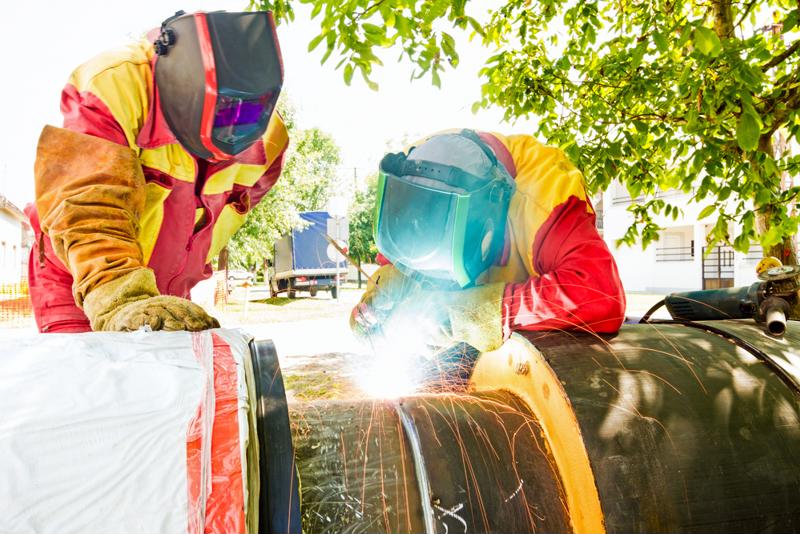
Of the numerous citations handed out by the U.S. Occupational Safety and Health Administration, 10 have the biggest impact on workplace safety.
Every October, OSHA releases its list of the 10 most frequently cited safety and health violations for the fiscal year. These citations are compiled after reviewing nearly 32,000 workplace inspections conducted by OSHA.
The top 10
According to OSHA, the 10 most common citations are:
- Fall protection
- Hazard communication
- Scaffolds
- Respiratory protection
- Lockout/tagout
- Powered industrial trucks
- Ladders
- Machine guarding
- Electrical wiring
- Electrical, general requirements
Refining workplace safety
No matter the industry, employers are responsible for providing safe and healthy workplaces for all employees. Yet, thousands of citations indicate this is not the case.
Neglecting safety can have harmful consequences. OSHA stated that in 2014, 4,821 workers were killed on the job. This breaks down to 13 fatalities occurring every day for more than 91 per week.
Construction workers are at greater risk for injury or death than workers in other industries, as 1 in 5 deaths occurred while at a construction work site. OSHA deemed the biggest safety concerns as “The Fatal Four,” which included workers being struck by an object, falls, electrocutions and caught-in/between.
Eliminating The Fatal Four would save approximately 545 employee lives every year. By understanding and refining safety standards based on the 10 most common citations, employers would be able to create even safer workplaces to help cut down on injuries and fatalities.
 No matter the industry, workers need to take the proper safety precautions.
No matter the industry, workers need to take the proper safety precautions.Fall protection
Two of most common citations revolve around the lack of fall protection. Employers, particularly in the construction industry, understand the importance of safety programs, yet falls are the leading cause of worker deaths.
OSHA requires fall protection be provided in various circumstances:
- Four feet at general industry worksites
- Five feet at shipyards
- Six feet in construction
- Eight feet in longshoring operations
While fall distance may vary, all workers should still be equipped with the necessary safety equipment such as harnesses. Employers must also maintain worksites to ensure employees don’t find themselves in dangerous situations that may arise. For instance, dry conditions and guardrails will help protect against slips, falls and trips.
Scaffolds also play an important role in fall protection.
Lockout/tagout
Control of hazardous energy falls under lockout/tagout. OSHA stated harmful energy can come from a variety of sources such as electrical, hydraulic, mechanical, thermal and chemical machines.
Workers who come into contact with harmful energy can face serious injury, or worse. In order to control these hazards, companies must follow OSHA’s lockout/tagout regulation, yet many are cited for not doing so. By complying with this particular standard, approximately 50,000 injuries and 120 fatalities can be prevented.
It’s up to the employers to ensure working conditions are as safe as possible. Energy control training programs should ideally be implemented and enforced. And for equipment that can be locked out, lockout devices need to be used. By following this standard, machines are properly turned off. Employees are also kept safe because machines can’t be turned on when they’re working on said equipment.
“Employers should ideally take a proactive approach to safety.”
Creating a safety program
Even though OSHA regularly compiles a list of the most common citations, there are still many more challenges and safety concerns on the job, no matter the industry.
OSHA has devised a blueprint for any sized company to follow. Organizations can adopt and evolve health and safety plans over time. However, OSHA emphasized that employers should ideally take a proactive approach to safety. Following a standard approach can often be reactive, with changes to safety procedures only occurring after a workplace injury. Employers who are proactive will be able to identify safety issues and address them before a worker is hurt.
Some of the main benefits of health and safety programs include:
- Reducing costs
- Preventing workplace illnesses and injuries
- Engaging workers
- Improving compliance with regulations
- Increasing productivity
- Enhancing social responsibility goals
Companies unsure of how exactly to develop a safety program can take a look at OSHA’s recommendations to get started. Within such a program should be safety and compliance standards specific to the industry.
By knowing the most common citations, employers will be able to cover all of their safety bases and continue their proactive approach to worker safety.








